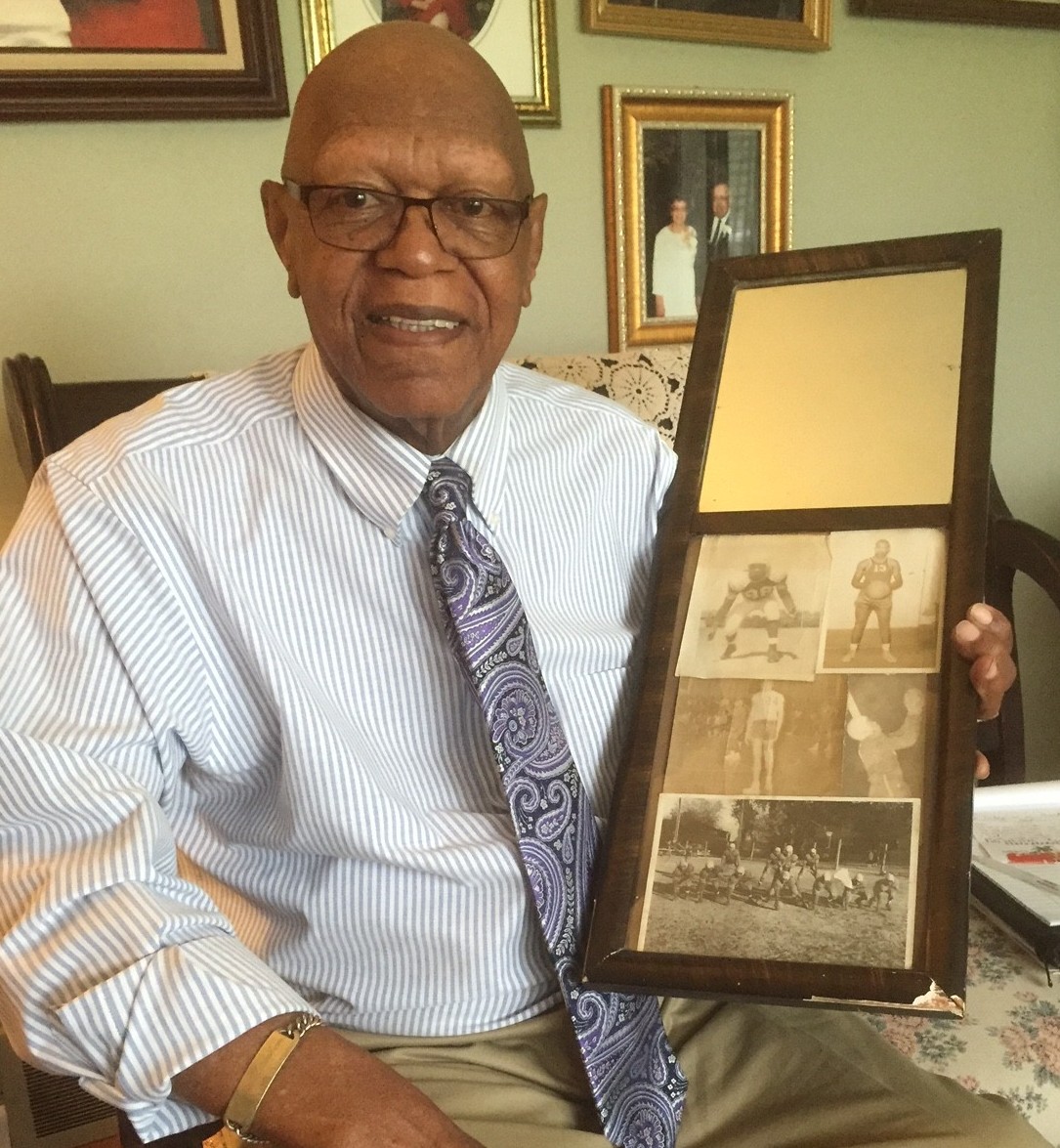Few discussions about the best athletes to come out of the Bowling Green area will mention Herbert Oldham. Those discussions, in truth, probably should begin with Oldham and his contemporaries.
One of the last remaining links to the pre-integration black high schools, Oldham isn’t one to toot his own horn.
“In my day, they didn’t want you to talk about yourself, didn’t want you to brag,” he says. “You let other people do the bragging for you.”
Back when he was snagging passes on the football field and sinking baskets in the gym at the old State Street High School, finding someone to brag about Oldham would have been easy. Not imposing at 5-foot-8 and 160 or so pounds, Oldham nonetheless got the attention of opponents and, eventually, college recruiters.
Oldham, now 84, still moves with the easy grace of an athlete and still has the outsized hands that helped make him a star at State Street in the late 1940s and early 1950s.
“I got my reputation by catching passes,” he recalls. “I could catch a football. I have big hands, and if you could get the ball to me, I could catch it. Ralph Gatewood was our quarterback, and he could get it to me.” 
How good was the Gatewood-to-Oldham passing combination? Few records remain as a testament to their greatness, but Oldham says the State Street teams coached by the legendary Joe Owmby were offensive juggernauts.
“We had some athletes at State Street back in those days,” he says. “Coach Owmby had been a track and football star at Tuskegee Institute. I got my tutelage from him. He came in with more razzle-dazzle. That’s why I was able to catch the football. The records are gone from the old black high schools, but I probably averaged two touchdowns per game catching the ball.”
With State Street and other black high schools not affiliated with the Kentucky High School Athletics Association, simply finding teams to play could be difficult.
“We traveled to Nashville, Columbia, Owensboro, and Henderson to play,” Oldham recalls. “There were some tough times playing, but we had some outstanding teams. We won district championships when I was playing, but we didn’t have a state playoff.”
That may have made it hard to get noticed, but Oldham’s exploits in football and basketball did catch the attention of coaches at North Carolina’s St. Augustine’s College, a historically black college founded in 1867 for the education of freed slaves. A small man playing at a small (approximately 600 students) college, Oldham came up big. Faded newspaper clippings are evidence of games in which Oldham scored multiple touchdowns as an offensive end or made big plays as a defensive back.
He played so well, in fact, that he was named to an All-American team for black colleges his senior year. Oldham, who also played basketball at St. Augustine’s, was inducted into the school’s Athletic Hall of Fame in 2007. 
Perhaps the best proof of Oldham’s athletic prowess came after he graduated from St. Augustine’s in 1955. It seems his pass-catching and defensive skills had caught the attention of National Football League scouts. Oldham was drafted by the Chicago Cardinals, and he rubbed elbows with the likes of NFL Hall-of-Famer Ollie Matson that summer at the Cardinals’ training camp.
“I tried out (for the Cardinals), but I had a contract in my pocket to teach school back in Bowling Green,” he recalls. “My desire was to be a teacher. I didn’t make the team, but I stayed until the last cut. It was an honor to be drafted.”
His playing days may have ended with that tryout, but Oldham continued to be involved in sports. After a stint in the Navy, he returned to Bowling Green in 1957 to teach and coach at High Street High School, which had replaced State Street as the city’s black high school. Oldham was an assistant coach in both football and basketball and was part of the highly successful basketball teams coached by Frank Moxley. After the black high schools merged with the KHSAA, High Street won Fourth Region championships in 1958 and 1959, advancing to the state quarterfinals the first year.
“High Street had some good boys,” Oldham reflects. “We did a lot of traveling because people wanted to see High Street play. Those were up-tempo teams, High Street scored over 100 points several times. Most of the other teams were slow and methodical.”
Oldham recalls players such as Bobby Joe Parrish, Ronnie Taylor, Robert Smith, and James Sears running the floor and running up big scores. “They could play,” he says. “They were athletes.”
Oldham eventually gravitated away from coaching. When High Street was combined with Bowling Green High School in 1964, he went to BGHS as a teacher before being hired as principal of High Street Elementary. He stayed there until 1974, when he became curriculum coordinator at Bowling Green Junior High. He later was hired as the district’s director of pupil personnel, a job he held for the last 15 years of his 35-year career in education.
“I never got to be a head coach,” Oldham says with mild regret. “But that wasn’t what I was supposed to do.”
Although it didn’t lead to a career in coaching, Oldham’s athletic career launched his career in education.
“If it hadn’t been for sports, there’s no telling where I would be today,” he says. “It opened up a new avenue of life for me. It gave me something to do. Education didn’t mean much to me until I got to high school and they told me if you don’t make a certain grade you can’t play sports. Going to school was important because I wanted to play sports. No one in my family finished college except me. I got an opportunity because I got a scholarship through sports. That made a tremendous difference in my life.”


